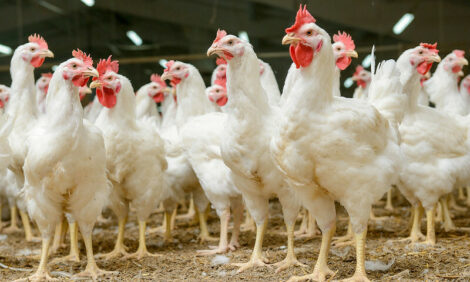



Four areas of hatchery management to help achieve better biosecurity
Diligent attention to four areas of hatchery management can go a long way toward reducing pathogen loads.Diligent attention to four areas of hatchery management - egg-pack quality, incubation, sanitation and in ovo vaccination - can go a long way toward reducing pathogen loads and delivering healthy chicks without the help of an antibiotic, according to a hatchery specialist.
Christopher Williams, PhD, director, technical services devices for Zoetis, is part of a team that helps hatcheries transition to no-antibiotics-ever production or troubleshoots for hatcheries that have already transitioned but are finding mortality is up.
Every hatchery is different, he told Poultry Health Today. Steps such as microbial sampling are taken, but it’s the combination of biosecurity measures that matters.
Aim for robust chicks
Williams acknowledged that hatchery schedules are important and put pressure on breeder managers, but hatcheries will perform better if managers understand the small details that make up breeder-farm husbandry.
The quality of eggs that go into the hatchery are a direct reflection of what’s going to come out of the hatchery. Poor egg-pack quality increases the potential for problems. “We don’t need to be setting cull eggs as a standard practice,” he said.
If incubation isn’t done correctly, birds weaken. “…any small lapse in sanitation is really going to cause a problem. So, that’s why I look at bird health, bird quality, uniformity - all these things that come together in the hatchery,” Williams said.
More robust and uniform chicks will be less susceptible to bacterial or fungal infections. It’s essential to pay attention to details such as making sure positive and negative pressures are correct and that clean and dirty areas are segregated, he said.
Two types of biosecurity
Williams advised poultry operations to think of biosecurity in two ways. There’s external biosecurity, which involves putting up barriers, and internal biosecurity, which has to do with making sure the environment is controlled within the hatchery.
Overall hatchery sanitation needs to take into account support equipment. Tray washers, power washers and fogging devices as well as any other equipment used in the hatchery have to be clean at the start of every day and cleaned up after use. Ventilation, including filters, plays a large role in sanitation and supports the hatchery environment.
The use of gentamicin during in ovo vaccination certainly had a place and helped to prevent bacterial infections, but most hatcheries have discontinued use of this antibiotic because it is deemed medically important to humans by FDA. Vaccine preparation has therefore become a “critical control point,” he said.
Without antibiotics, it’s even more imperative that vaccine preparation takes place in a clean environment. “We have to have environments that we can mix our vaccine in that we can keep clean. When we apply the vaccines - when we connect the bag to the machine - we have to be thinking about sterile and aseptic technique,” Williams continued.
All these management steps involving biosecurity interact, and any small lapse in sanitation is really going to cause a problem. “The weakest link is going to break the chain,” he cautioned.
Hatchery visits
When evaluating hatcheries, look with “soft eyes,” Williams said. “You need to see things for what they are, not what you think they are. And many of the problems that we find are right in front of our face, but we’ve looked at them so often we don’t recognise them as a problem.”
He predicted the trend to use more automation and robotics will help improve hatchery biosecurity as well as bird welfare. In an industry with an often-transient labor force, robotics provide a way for hatcheries to move eggs or chicks with reliable, repeatable motions that can be controlled. “I see that as a huge investment going forward but also a very good one.”









